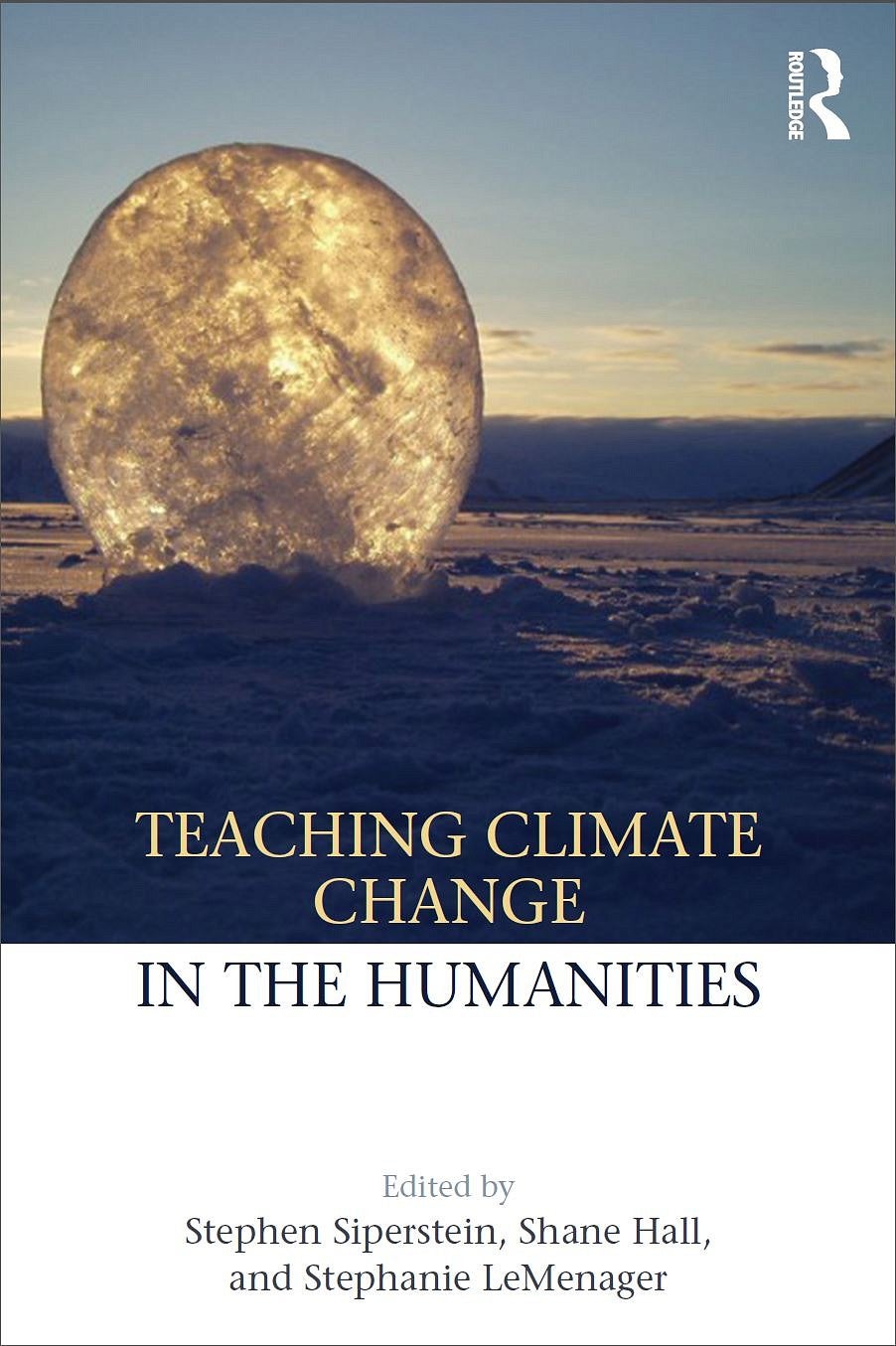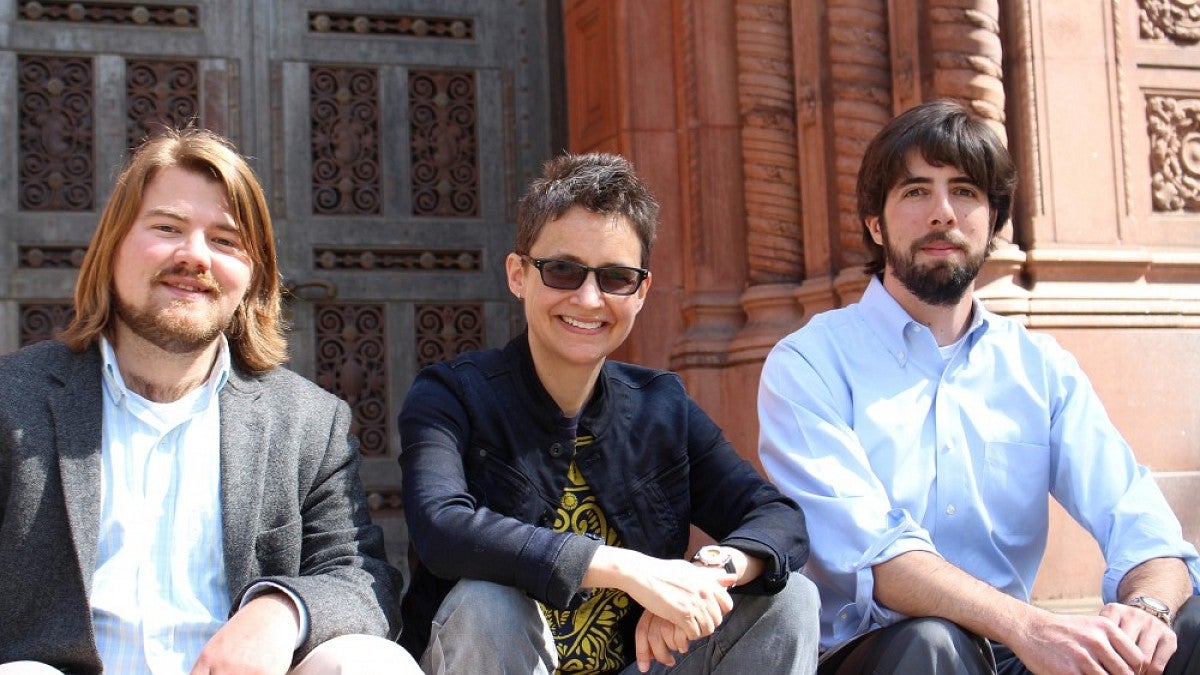
Actually, they’ve just finished editing a whole new book, one that takes climate change out of the lab and into the classroom — but not the science classroom. After all, climate change is expected to change a lot more than the weather, generating shifts in society as it alters coastlines and forests.
That’s why a UO professor and two graduate students think it’s time undergraduates learn about the potential effects of climate change through their classes in history, English, art and philosophy. To that end, they’re pulling together “Teaching Climate Change in the Humanities,” the first-ever textbook to guide the teaching of climate change in university-level humanities classes.
Aimed at instructors and professors, as well as individuals with an interest in climate change issues, the book collects essays from thought leaders around the world about how climate change can be infused throughout the humanities and social science curricula. The editors say it’s time students start learning what climate change means not just for the planet, but for its people.
“I envision this volume as setting out a challenge for higher education, specifically humanities education, to forge new paths in terms of teaching and empowering students to become climate literate,” said Stephen Siperstein, a doctoral student in English and co-editor of the textbook. “Not just in the sciences but in the human dimensions of climate change and what that means for their futures.”
Working with Siperstein as co-editor is Shane Hall, a doctoral student in environmental studies, science and policy, and their faculty advisor, Stephanie LeMenager, the Barbara and Carlisle Moore Professor of English at the UO and a recognized expert in climate change and culture. They already have a contract with Routledge, a leading humanities textbook publisher, and hope to get the volume on bookstore shelves for winter classes in 2017.
At first blush, it might seem that climate change education falls squarely in the natural sciences rather than art or philosophy. But LeMenager said that notion ignores two important facts: the wide-ranging societal shifts that will come with climate change, and the power of a humanities education to prepare students for the future.
“My experience has been that my colleagues in the natural sciences and the physical sciences want the humanities at the table,” she said of climate change education. “Scientists will often say we need more human interest to this story, we need people to start imagining and envisioning the world climate change could create. Whereas in the humanities itself people might say, ‘Well, that’s the scientists’ problem,’ the scientists are saying, ‘We really need you at the table.’”
And the UO is a natural place for the humanities to take a seat at that table. LeMenager said the university already is at the forefront in teaching “environmental humanities,” or the study of environmental issues across humanities and social science disciplines.
That’s a big reason LeMenager came to the UO a little over a year ago, after 13 years in the University of California system and previously at Harvard, where she earned her doctoral degree. The connection between the humanities and the environment at the UO, she said, “is far and above anything I’ve ever seen.”
“That’s one of the reasons I think we can claim a position, if not of authority, then sort of as a shepherd over this new field,” LeMenager added.
Professor Karen Ford, associate dean of the College of Arts and Sciences, said given the developing nature of the field, it’s not surprising that the project grew out of a grassroots, or what she calls a “classroots,” graduate program at the UO.
“The humanities offer nuanced ways into complex problems like climate change, bringing the powers of language, interpretation and imagination to data produced by other fields of study,” she said. “And given the severity of the consequences of global climate shift, it's time to bring all aspects of our intelligence as humans to bear on the problem. So a book like this is important and timely. It offers the distinctive capacities of the humanities in teaching, communicating and envisioning change.”
Siperstein said the humanities are a natural forum for moving the talk about climate change beyond just the weather. Not all students will take a climate science class, but the humanities can bring the topic to students through other classes and subjects they’re already passionate about.
“They don’t necessarily want the nitty-gritty of climate change, but they’re interested in it, they know it’s a problem,” he said. “Students are not getting this kind of education in high school, and they crave it. They want to know what to do, they want to be able to talk about it in compelling ways, and I think the humanities can do that.”
Even before it’s published, the textbook is drawing attention. So many people wanted to contribute essays that the team decided to expand it from 25 chapters to 35, and several publishers expressed interest, LeMenager said. Just the call for contributors has led organizers of prominent workshops and symposia to start including sessions on climate change and the humanities. The famous climate activist Bill McKibben agreed to write an afterword for the volume, just two weeks before he left for the COP21 conference in Paris.
“It really is trying to help teachers not only teach the problem of climate change, scientifically and politically, but also to teach a sense of where we go from here,” LeMenager said, “so students leave the classroom not in despair but feeling as if they are active citizens, active planetary citizens.”
—By Greg Bolt, Public Affairs Communications


